A Mid-nineteenth century Chinese Straits silver repousse cylindrical lidded box

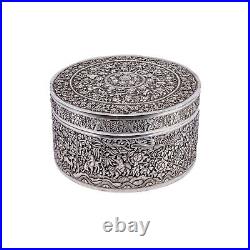
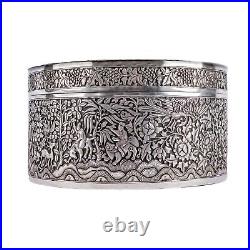
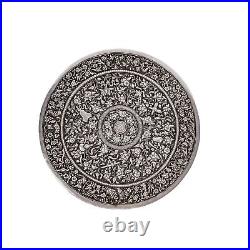

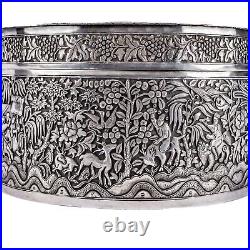
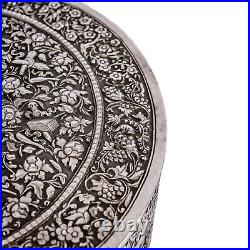



A fine mid-nineteenth century Chinese Straits silver repousse cylindrical lidded box with makers mark to base. This sumptuously decorated box demonstrates the exceptional quality of workmanship that existed within the Peranakan communities. Chinese migration to the Malay Archipelago began as early as the 10th century and increased tremendously during the 15th to 17th centuries following the Ming empires reopening of Chinese-Malay trade relations. During the 19th century the expansion of British colonial rule in the area encouraged the already vibrant trade and helped to cement the pivotal role of Singapore in the area’s economic development. The communities that developed from the integration of the Chinese migrants with the local population retained much of their cultural heritage and traditions from the mainland. These cultural links are evident in the art produced and traded throughout the area often illustrating historical and quasi legendary events, and this box is a perfect example of this continuation of tradition and heritage. The box is of a form which is also found in lacquer and jade, the abundance of decoration is typical of luxury items that often convey several messages relating to long standing traditions and beliefs. The lavish floral decoration on the lid incorporates flowering peonies, emblematic of wealth and prosperity and chrysanthemums which embody joy and peace. Entwined within these flowers are items reinforcing these themes, notably the gourd and a fan. Along with these items we find items of martial virtue, a sword, a quiver of arrows and crossed maces along with a traditional ancestor tablet. This is encircled with more lavish vegetal decoration inhabited by birds and beasts. The rim of the lid has a continuous frieze of vine leaves with bunches of grapes which reinforces the themes we see on the lid of wealth and fertility. The main body of the box continues the theme of lush vegetation which provides the background to the figures portrayed in the act of battle. The figures are identified with banners and represent figures from both historical and legendary China. The main protagonist is Di Qing, a famous warrior of the Song dynasty in the 11th century. Renowned for his martial exploits, he would don a bronze mask and let his hair flow freely during battle as shown here. His legendary pursuits formed the centrepiece of three Qing dynasty novels collectively known as the Romance of Di Qing, these works were developed into traditional Chinese Opera which naturally helped to spread the tales. Various versions of these stories were produced over the years, in the scene shown here along with Din Qing we have a figure identified as Shuang Yang’The Rebel Princess’ who is here married to Di Qing. The stories were also reproduced in wood block prints during the 19th century, one famously showing Di Qing and fellow generals in battle. Along with the battling figures we see various actual and legendary animals inhabiting the landscape. The most important being a Dragon symbolising the Sun and a Phoenix the Moon. These represent the masculine and feminine, the Emperor and Empress, good luck, strength and health. There are also deer and cranes which are both auspicious animals. Along with the figures taking part in the battle two figures stand out apart from the main groups. These appear from their attributes and mounts to be two immortals, probably He Xiangu mounted on a deer and Cao Guojiu on a lion. The large scale, sumptuous decoration and use of precious metal would indicate this was a luxury item intended for display rather than use. The quality of workmanship is exceptional, a suitably beautiful addition to any collection. A 19th century wood block depiction of the Opera battle scene involving Di Qing and the Northern Song generals. H: 10.5cm W:19.5cm.

